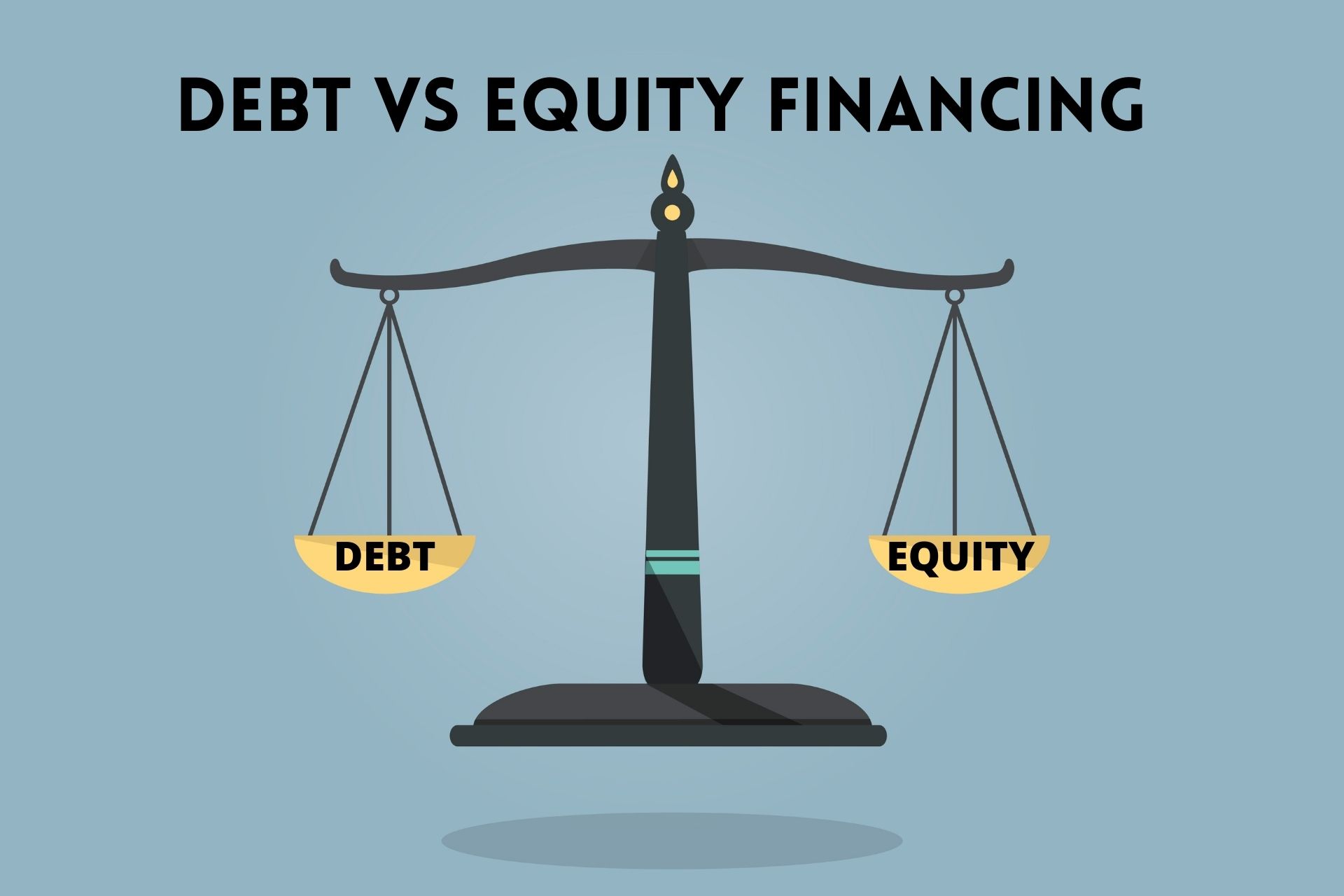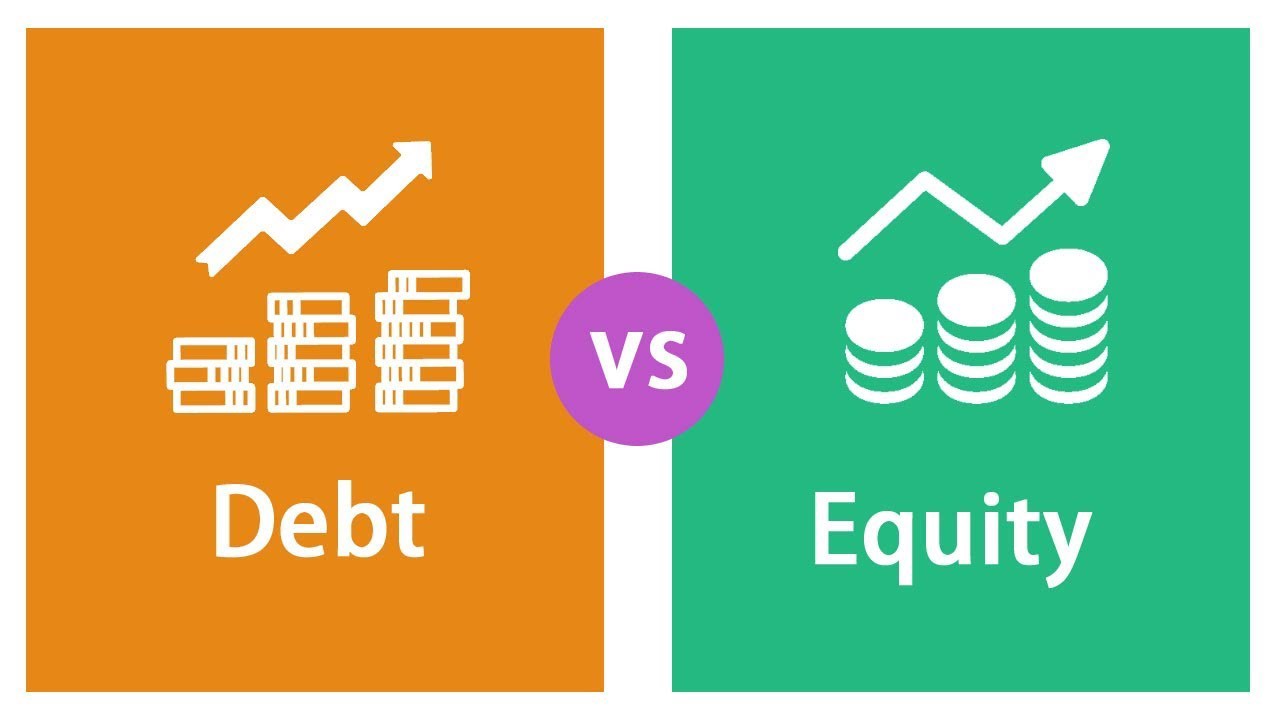Home>Finance>Which Three Sources Are Considered Debt Financing?


Finance
Which Three Sources Are Considered Debt Financing?
Modified: February 21, 2024
Discover the top three sources of debt financing in the field of finance. Explore various options to find the perfect fit for your financial needs and goals.
(Many of the links in this article redirect to a specific reviewed product. Your purchase of these products through affiliate links helps to generate commission for LiveWell, at no extra cost. Learn more)
Table of Contents
Introduction
Debt financing is a crucial aspect of the financial landscape for individuals and businesses alike. It involves borrowing funds from external sources to finance various needs, from personal expenses to business investments. Debt financing provides access to capital that may not be readily available, enabling individuals and organizations to achieve their financial goals.
In this article, we will delve into the concept of debt financing and discuss three key sources commonly utilized to acquire debt. By understanding these sources, individuals and businesses can make informed decisions regarding their financing options and leverage them strategically to meet their financial objectives.
Whether you are an individual looking to finance a major purchase or a business seeking capital for expansion, understanding the different sources of debt financing is essential. So, let’s explore these sources in greater detail to gain a comprehensive understanding of how debt financing works.
Before diving into the specifics, it is important to note that debt financing involves borrowing funds that need to be repaid over a specified period. The borrower, whether an individual or a business, agrees to pay back the principal amount along with interest, which is the cost of borrowing. Debt financing allows individuals and businesses to access larger sums of money than they may be able to obtain through personal savings or equity financing.
Now, let’s explore the three primary sources of debt financing that individuals and businesses commonly rely on:
Definition of Debt Financing
Debt financing refers to the process of borrowing money from external sources to fund various financial needs. It involves entering into an agreement with the lender, who provides the funds to the borrower. In return, the borrower agrees to repay the borrowed amount over a set period, along with any interest or fees associated with the loan.
Debt financing can be used by individuals, businesses, governments, and other entities to meet various financial objectives, such as making large purchases, funding business expansions, or managing cash flow. Unlike equity financing, which involves selling ownership stakes in a company, debt financing does not dilute ownership. Instead, it allows individuals or businesses to access capital while retaining ownership control.
The borrowed funds can be used for a variety of purposes, including but not limited to:
- Starting or expanding a business
- Purchasing real estate or property
- Investing in equipment or machinery
- Consolidating existing debts
- Funding education or professional development
- Managing unexpected expenses or emergencies
Debt financing typically involves a contractual agreement between the borrower and the lender, outlining the terms and conditions of the loan. These terms may include the interest rate, repayment schedule, collateral requirements, and any associated fees.
It’s important for borrowers to carefully consider their financial situation, objectives, and the terms of the loan before entering into a debt financing arrangement. Understanding the total cost of borrowing, including interest and fees, can help borrowers assess their ability to repay the loan and make informed decisions about their financial obligations.
Overall, debt financing provides individuals and businesses with the opportunity to access funds that may not be readily available otherwise. It can be a valuable tool for achieving financial goals, but it is essential to approach debt financing responsibly and strive to maintain a healthy balance between debt and financial stability.
Three Sources of Debt Financing
There are various sources through which individuals and businesses can acquire debt financing. Here, we will explore three primary sources commonly used:
1. Bank Loans: One of the most common and widely accessible sources of debt financing is bank loans. Banks offer a range of loan products designed to meet different needs, such as personal loans, home loans, and business loans. These loans typically involve borrowing a specific amount of money from the bank and repaying it with interest over a predetermined period.
Bank loans may require collateral, such as property or assets, to secure the loan. The interest rates and terms of bank loans can vary depending on factors such as the borrower’s creditworthiness, the purpose of the loan, and the current economic conditions. It is essential to shop around, compare loan offers, and carefully review the terms and conditions before choosing a bank loan.
2. Bonds: Bonds are another significant source of debt financing, especially for businesses and governments. When an entity issues bonds, they are essentially borrowing money from investors. Investors who purchase bonds become creditors and receive regular interest payments from the issuer over a specified period. At the end of the bond term, the issuer repays the principal amount to the bondholders.
Bonds can be issued by corporations, municipalities, and government agencies at various interest rates and maturity periods. Investors can buy and sell bonds on the secondary market, providing liquidity and flexibility. Bond issuers must meet certain requirements, such as credit ratings and legal documentation, to attract investors and ensure repayment.
3. Trade Credit: Trade credit is a form of short-term debt financing commonly used in business-to-business transactions. It allows businesses to purchase goods or services from suppliers on credit, with an agreed-upon payment deadline. This period, known as the credit terms, can range from a few days to several months.
Trade credit provides a source of financing for businesses to acquire necessary inventory or supplies without immediate cash outflow. It allows the buyer to generate revenue from the goods or services before the payment is due. Trade credit terms can vary depending on the relationship between the buyer and supplier, payment history, and industry norms.
In addition to these three primary sources, there are other forms of debt financing available, such as lines of credit, credit cards, and peer-to-peer lending. Each source has its own advantages, disadvantages, and eligibility criteria. It is crucial for individuals and businesses to evaluate their borrowing needs, assess their financial situation, and thoroughly research and compare the available options to make an informed decision.
Bank Loans
Bank loans are one of the most prevalent and accessible sources of debt financing for individuals and businesses. Banks offer various loan products designed to meet different needs, ranging from personal loans to business loans. Obtaining a bank loan involves borrowing a specific amount of money from a bank and repaying it over a predetermined period, along with interest.
There are different types of bank loans available, including:
- Personal Loans: Personal loans are unsecured loans provided by banks to individuals. They can be used for various purposes, such as home renovations, debt consolidation, or funding a major purchase. Personal loans typically have fixed interest rates and repayment terms, making it easier for borrowers to plan their finances.
- Home Loans: Home loans, also known as mortgages, are loans provided to individuals for purchasing or refinancing a property. These loans are secured by the property itself, which serves as collateral. Home loans have longer repayment terms, often spanning several decades, allowing borrowers to spread their payments over time.
- Business Loans: Banks offer a range of loans specifically tailored for businesses, such as term loans, lines of credit, and equipment financing. Business loans can be used for various purposes, including working capital, purchasing inventory, expanding operations, or investing in new equipment. These loans may require collateral, and the interest rates and terms can vary based on factors like the borrower’s creditworthiness and the business’s financial stability.
When applying for a bank loan, borrowers need to provide necessary documentation, such as proof of income, bank statements, and identification. The bank evaluates the borrower’s creditworthiness, income stability, and ability to repay the loan. Based on this assessment, the bank determines the loan amount, interest rate, and repayment terms.
Bank loans can offer several advantages to borrowers. They provide access to a lump sum of money that can be repaid over time, allowing individuals and businesses to finance their needs without depleting their savings. Bank loans also offer fixed interest rates, which provide stability and predictability in loan repayments. Additionally, establishing a positive repayment history with a bank can strengthen the borrower’s credit profile, making it easier to access future credit.
However, it’s important to consider potential drawbacks as well. Bank loans may require collateral, which can be a risk if the borrower defaults on the loan. Interest rates may vary based on market conditions, and borrowers should be aware of any associated fees, such as origination fees or prepayment penalties.
Before choosing a bank loan, it’s crucial for borrowers to shop around, compare loan offers from different banks, and carefully review the terms and conditions. This allows individuals and businesses to find the loan that best aligns with their financial needs, repayment capabilities, and long-term goals.
Bonds
Bonds are a common source of debt financing, particularly for businesses and governments. When entities issue bonds, they are essentially borrowing money from investors. Investors who purchase bonds become creditors and receive regular interest payments from the issuer over a specified period. At the end of the bond term, the issuer repays the principal amount to the bondholders.
There are various types of bonds, including:
- Corporate Bonds: Corporate bonds are issued by corporations to raise capital for various purposes, such as funding expansions, acquiring assets, or refinancing existing debt. These bonds typically offer fixed interest payments at regular intervals over the bond’s term. Corporate bonds can vary in credit ratings, which reflect the issuer’s creditworthiness and determine the level of risk associated with the bond.
- Municipal Bonds: Municipal bonds, often referred to as munis, are issued by state and local governments to finance public projects like infrastructure development or schools. Municipal bonds are generally exempt from federal taxes, making them attractive to investors seeking tax advantages. These bonds can have different interest payment structures, such as fixed-rate or variable-rate, and the repayment is backed by the issuer’s ability to levy taxes or generate revenue.
- Government Bonds: Government bonds are debt instruments issued by national governments to raise funds for various purposes, including funding budget deficits and financing public projects. These bonds are considered low-risk investments since they are backed by the full faith and credit of the government. Government bonds can have different terms and interest payment frequencies, providing investors with flexibility in choosing their investment horizon.
Bonds are commonly traded on the secondary market, allowing investors to buy and sell them before their maturity. This provides liquidity and the opportunity for investors to realize capital gains or losses based on market conditions and interest rate fluctuations.
For borrowers, issuing bonds allows them to raise large amounts of capital from a diverse pool of investors. The interest rate on the bond is determined by various factors, including prevailing market rates, the issuer’s credit ratings, and the terms and conditions set for the bond offering. Bond issuers must meet certain requirements, such as providing legal documentation and undergoing credit rating evaluations, to attract investors and ensure repayment.
Investing in bonds can offer several advantages for investors. Bonds are generally considered less volatile and lower-risk compared to shares of stock. They provide income through regular interest payments and return of principal amount at maturity. Bonds also offer portfolio diversification, as they have different risk profiles and can potentially cushion against market downturns.
However, it’s important to note that bonds come with their own set of risks. One risk is the possibility of default by the issuer, particularly for lower-rated or high-yield bonds. Changes in interest rates can also impact the value of bonds, with rising rates potentially causing a decline in bond prices. Additionally, market conditions, inflation, and economic factors can affect the overall performance of bonds.
Overall, bonds are a valuable source of debt financing for businesses and governments, allowing them to raise capital and fund their operations and projects. Bond investments provide a means for investors to earn fixed income and diversify their portfolios. Proper research and understanding of bond offerings, credit ratings, and market conditions are essential for both bond issuers and investors.
Trade Credit
Trade credit is a form of short-term debt financing commonly utilized in business-to-business transactions. It allows businesses to purchase goods or services from suppliers on credit, with an agreed-upon payment deadline. This period, known as the credit terms, typically ranges from a few days to several months.
Trade credit serves as a valuable source of financing for businesses, enabling them to acquire necessary inventory or supplies without immediate cash outflow. By utilizing trade credit, businesses can obtain the products or materials they need to operate and generate revenue before the payment to the supplier is due.
The terms of trade credit can vary depending on factors such as the relationship between the buyer and supplier, payment history, industry norms, and the specific negotiating power of each party involved. Typically, larger and more established businesses have a greater ability to negotiate favorable credit terms, such as longer payment periods or lower interest rates.
Trade credit comes with several advantages for businesses:
- Working Capital Management: Trade credit allows businesses to manage their working capital effectively. It provides a temporary source of financing to bridge the gap between the purchase of goods or services and the receipt of revenue from sales.
- Cash Flow Management: By utilizing trade credit, businesses can preserve their cash flow and retain liquidity. They can allocate their available funds to other critical areas of the business, such as marketing, operations, or investment in growth initiatives.
- Supplier Relationships: Building strong relationships with suppliers is crucial for businesses. By maintaining a good payment history and utilizing trade credit responsibly, businesses can foster positive relationships with suppliers, which may result in benefits such as priority ordering, bulk discounts, or extended credit terms.
However, it’s important for businesses to manage trade credit responsibly to avoid potential drawbacks:
- Interest Charges: Some suppliers may charge interest on outstanding balances beyond the agreed-upon credit terms. Businesses need to carefully review and understand the interest rates and any additional charges before entering into trade credit agreements.
- Strains on Relationships: Failure to adhere to the credit terms can strain the relationship between the buyer and supplier. Late or non-payment can lead to penalties, strain the business’s reputation, and potentially result in reduced credit availability or even legal action.
- Dependency on Suppliers: Relying too heavily on trade credit can create a dependency on specific suppliers. If those suppliers increase prices or change their credit terms unfavorably, it can have a significant impact on the business’s operations and profitability.
Trade credit is an essential component of the business financing landscape, allowing businesses to manage cash flow, optimize working capital, and establish mutually beneficial relationships with suppliers. By effectively managing trade credit, businesses can meet their short-term financing needs while maintaining financial stability and flexibility.
Conclusion
Debt financing is a vital tool that individuals and businesses use to acquire the necessary funds to meet their financial objectives. Understanding the various sources of debt financing is essential for making informed decisions and leveraging these sources strategically.
In this article, we explored three primary sources of debt financing: bank loans, bonds, and trade credit. Bank loans provide individuals and businesses with access to capital through borrowing from banks, allowing them to fund personal expenses, purchase assets, or finance business operations. Bonds, on the other hand, enable entities to borrow funds from investors and repay them through regular interest payments and eventual return of the principal amount. Lastly, trade credit allows businesses to acquire necessary goods and services from suppliers on credit terms, providing short-term financing for working capital needs.
Each source of debt financing has its advantages and considerations. Bank loans offer accessibility, fixed interest rates, and potential credit-building opportunities. Bonds provide opportunities for larger capital raising and diverse investment options. Trade credit allows businesses to preserve cash flow and manage working capital efficiently.
However, it is crucial for borrowers and businesses alike to approach debt financing responsibly, assessing their financial situation and considering the terms and conditions of the financing options. Understanding the risks and potential drawbacks associated with each source of debt financing is equally vital.
By carefully evaluating their financing needs, comparing options, and maintaining a balanced approach to debt, individuals and businesses can effectively utilize debt financing to achieve their financial goals. It is essential to strike a balance between leveraging debt to grow and being mindful of repayment obligations to maintain financial stability.
In conclusion, debt financing is a powerful tool that can provide individuals and businesses with the necessary capital to achieve their objectives. By leveraging the various sources of debt financing available, borrowers can effectively navigate their financial journeys and seize opportunities for growth and success.














